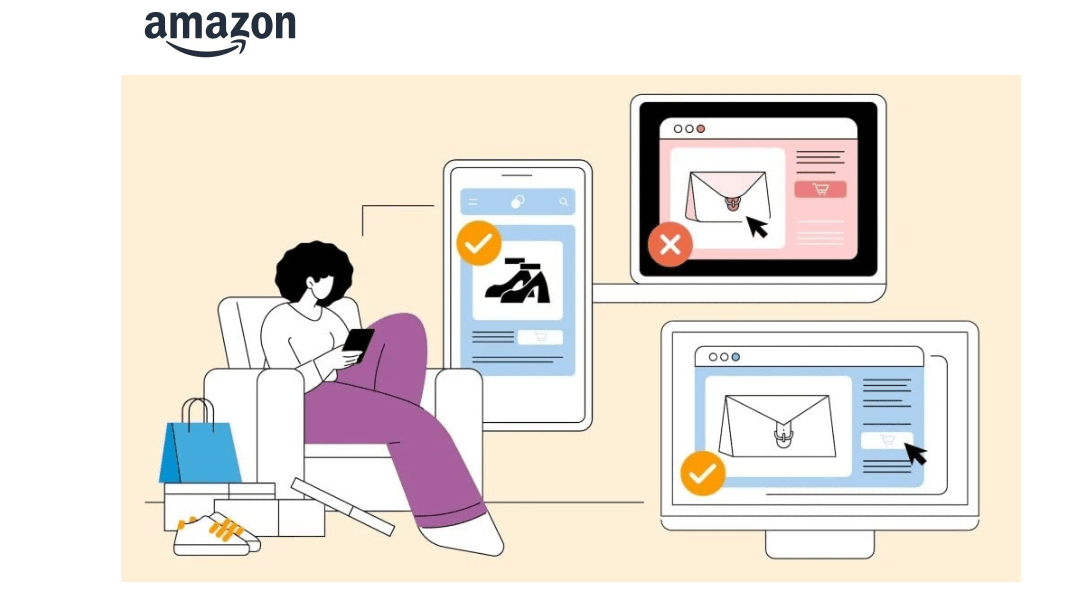Hackers and fraudsters are opportunists. As technology evolves, they’ll think of creative ways to steal your data, your money or your identity. Most all of the USA are Amazon Prime customers and much of the developed world as well. Hackers are having a field day.
In a recent email from Amazon, Amazon gave the following warning:
What to watch out for?
Scammers might send fake email attachments or say you are being charged a costly fee.
How can you avoid being scammed?
Visit the Message Center on Amazon.com or on our app to review authentic emails from Amazon. To verify your Prime membership status, authorize payments, or make changes to your billing and account information, log into your Amazon account, and go to Your Account. Customer Service is available 24/7 to help with any questions you may have.
Keep others safe
If you receive communication — a call, text, or email — that you think may not be from Amazon, please report it to us at, amazon.com/reportascam.
Other ways you can be better protected against scams?
How Can Business Owner Better Digitally Protect Themselves
In today’s digital landscape, business owners must be vigilant against an ever-growing array of cyber threats. Here’s how you can safeguard your business against common scams and security risks.
Beware of Phishing Attacks
Phishing remains one of the most prevalent cyber threats. These attacks often come in the form of emails that appear to be from legitimate sources, asking you to click a link or provide sensitive information.
To protect yourself:
- Be skeptical of unexpected emails, especially those urging immediate action
- Hover over links to preview the URL before clicking
- Never provide sensitive information via email
- Use email filters to flag potential phishing attempts
Guard Against Malware and Viruses
Malicious software can compromise your systems, leading to data breaches or operational disruptions.
Protect your business by:
- Installing and regularly updating antivirus software on all devices
- Keeping your operating systems and applications up-to-date
- Avoiding downloads from untrusted sources
- Regularly backing up your data to secure, offline locations
Scrutinize URLs Carefully
Cybercriminals often use URLs that look almost identical to legitimate websites. This tactic, known as typosquatting, can lead you to harmful sites.
Stay safe by:
- Double-checking URLs before entering any sensitive information
- Looking for the padlock icon and “https” in the address bar
- Using bookmarks for frequently visited important sites
- Being wary of shortened URLs, which can mask the true destination
Implement Two-Factor Authentication (2FA)
2FA adds an extra layer of security by requiring a second form of verification beyond just a password.
Enhance your security by:
- Enabling 2FA on all accounts that offer it, especially financial and email accounts
- Using authenticator apps rather than SMS for the second factor when possible
- Educating your staff on the importance of 2FA and how to use it properly
Strengthen Your Password Practices
Weak passwords are an easy entry point for cybercriminals.
Improve your password security by:
- Using long, complex passwords or passphrases
- Never reusing passwords across multiple accounts
- Implementing a password manager for your team
- Regularly updating passwords, especially after any security incidents
Educate Your Team
Your employees are your first line of defense against cyber threats.
Boost your team’s cybersecurity awareness by:
- Conducting regular security training sessions
- Simulating phishing attacks to test and improve awareness
- Creating clear security policies and procedures
- Encouraging a culture where security concerns can be freely reported
Secure Your Wi-Fi Network
An unsecured Wi-Fi network can be an open door for cybercriminals.
Protect your network by:
- Using strong encryption (WPA3 if available, or WPA2)
- Changing default router passwords and SSIDs
- Regularly updating router firmware
- Setting up a separate guest network for visitors
Be Cautious with Remote Access
With the rise of remote work, secure remote access is crucial.
Enhance remote security by:
- Using a Virtual Private Network (VPN) for remote connections
- Implementing strict access controls and monitoring
- Ensuring all remote devices have up-to-date security software
- Using remote desktop protocol (RDP) securely, if necessary
Stay Informed About Current Threats
Cyber threats evolve rapidly, and staying informed is key to staying protected.
Keep up-to-date by:
- Following reputable cybersecurity news sources
- Subscribing to alerts from organizations like US-CERT
- Joining local business cybersecurity groups or forums
- Regularly reviewing and updating your security measures
By implementing these measures, you can significantly reduce your business’s vulnerability to cyber threats. Remember, cybersecurity is an ongoing process, not a one-time task. Regularly review and update your security practices to stay ahead of evolving threats.
Would you like me to expand on any of these points or cover additional cybersecurity topics?












